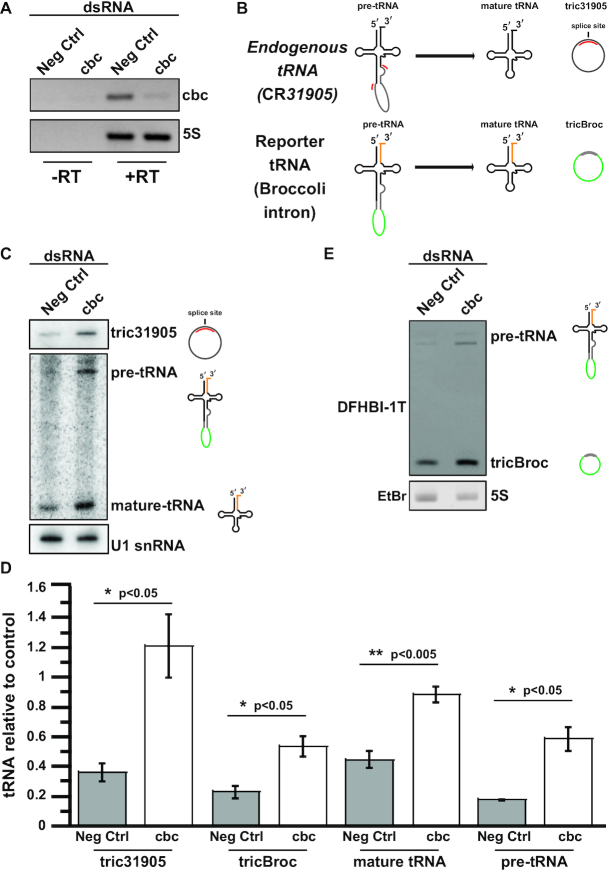Figure 5.
Depletion of the Drosophila melanogaster CLP1 orthologue, cbc, in S2 cells does not prevent the generation of tricRNAs or tRNA maturation. S2 cells were treated with dsRNA to knock down cbc in vivo. Cells were then transfected with a D. melanogaster tRNA-Tyr reporter containing Broccoli in the intron (23). Total RNA was isolated from the cells. (A) RT-PCR was used to measure successful cbc knockdown by dsRNAs, with 5S rRNA and unamplified RNA as controls. (B) A cartoon depicting the final products formed from the in vivo cleavage of endogenous Drosophila tRNA CR31905 and the transfected reporter tRNA-Broccoli-intron tRNA. Only tric31905 is visualized by the tric31905 probe whereas introns, intron containing tRNAs, and the 3′ exon are detected for the dual reporter. (C) A northern blot probing tric31905 was performed to measure levels of endogenous circular intron production. We also carried out a northern blot to measure levels of pre-tRNA and mature-tRNA from the same sample. Levels of the snRNA U1 in bottom panel is the loading control for both northern blots. (D) Levels of tric31905 (n = 3), tricBroc (n = 4), mature tRNA (n = 4), and pre-tRNA (n = 4) levels were quantified and normalized to the U1 or 5S controls on their respective gels/blots. The average and standard error for biological replicates is shown. A student's t-test was used to calculate significance: *P < 0.05 and **P < 0.005. (E) RNA was run on a TBE-Urea gel and visualized using DFHBI-1T. The gel was then re-stained with ethidium bromide, and the 5S rRNA is shown as a loading control.

